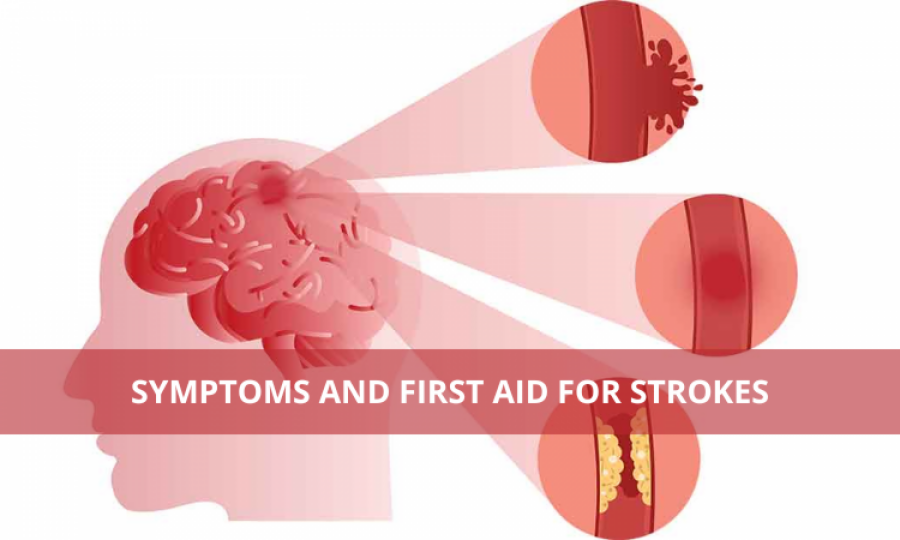Symptoms and First Aid for Strokes

A stroke happens when blood circulation is impaired; there may be bleeding in the brain or blocked circulation. It occurs due to clot formation. This clot formation cuts off the brain's nutrition and oxygen, and the brain cells start immediately dying. A stroke is an emergency situation and requires immediate assistance. If a stroke episode is recognized on time, medications can dissolve the clot, and the blood circulation can return to normal. It is essential that people know the symptoms and signs of stroke so that they can call for an ambulance as soon as possible. Two types of stroke can occur:
- Minor stroke or Transient Ischaemic Attack (TIA): In this, the patient only has weakness on one side of the body accompanied by loss of speech for a few minutes. This usually can have a full recovery. But this indicates that the patient may face major strokes later on.
- Major stroke: In major strokes, there is complete paralysis of one or both sides of the body. Speech is permanently impaired. This doesn't necessarily lead to full recovery.
Signs and symptoms: Always look out for particular stroke signs in a patient. They are:
- Facial weakness: There is an uneven smile, droopy eyes, or mouth.
- Arm weakness: They cannot raise their arms.
- Speech: Speech is irregular and slurry.
These are the significant stroke symptoms; other signs can include:
- Numbness on one side of the body.
- Blurry vision in one eye.
- Severe headache.
- Sudden loss of balance, tingling sensation in extremities.
- Confusion.
Risk factors: High blood pressure, previous stroke history, heart disease, diabetes, smoking, and increased age.
First aid: With a stroke, it is vital that we do not take a wait-and-see approach. Call an ambulance and get the patient to a hospital immediately when the signs are recognized. A delay in reporting can worsen the condition and make the damage permanent. While waiting for the ambulance to arrive, observe the patient for any possible deterioration in the symptoms. If symptoms worsen, turn the patient over to their side and support their back. Please do not give the patient anything to eat or swallow; they might choke on it. Monitoring is essential. According to the American Heart Association (AHA) and American Stroke Association (ASA), the risk of disability is decreased if clot-dissolving drugs are administered within 4.5 hours. Mechanical clot removals can be performed within 24 hours of stroke recognition. It is essential to tell the time the first responder noticed the symptoms. If a patient has diabetes, the hospital will maintain the glucose levels with a glucose tablet, a glass of orange juice or other sugary drink or food, or a glucagon injection. At the hospital, the doctor will run tests like MRI or CT scan to see any bleeding in parts of the brain.
Stroke recovery includes acute care, rehabilitation, and strengthening exercises. The goal is to improve mobility, ease muscle tension and enhance motor skills.
Trending
Popular
Sindh pledges vigorous action to prevent poliovirus transmission
-
PMA stresses health equity on World ...
04:08 PM, 9 Apr, 2024 -
Dow University’s new rabies vaccine ...
12:18 PM, 28 Mar, 2024 -
IRD role lauded in advancing ...
02:53 PM, 12 Mar, 2024 -
Over one billion people worldwide ...
09:48 AM, 5 Mar, 2024




